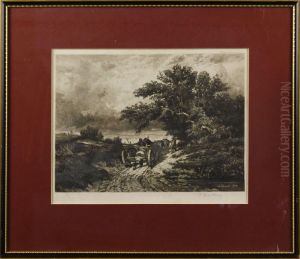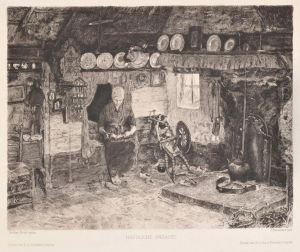Fritz Krostewitz Paintings
Fritz Krostewitz was a German artist known for his contributions to graphic art and painting. Born on October 1, 1892, in Köthen, Germany, Krostewitz showed an early interest in art and pursued his passion by studying at the Royal Academy of Graphic Arts and Book Trade in Leipzig. His education was interrupted by World War I, in which he served and was subsequently taken prisoner. After the war, he returned to Germany and resumed his artistic career.
Throughout the 1920s and 1930s, Fritz Krostewitz was involved in the German art scene and became an active member of various artist associations. His work during this period was influenced by Expressionism and the New Objectivity movement. He created lithographs, etchings, and woodcuts, and his graphic works often depicted urban life, social critiques, and the human condition. Krostewitz was also known for his landscape paintings, which exhibited a strong sense of composition and color.
The rise of the Nazi regime and the outbreak of World War II had a profound impact on Krostewitz's life and work. Like many artists of the time, he faced restrictions and was forced to adapt his artistic expressions to fit the sanctioned styles. Despite the challenges, he continued to produce art, although some of his works from this period were lost or destroyed during the war.
After the war, Fritz Krostewitz continued to work as an artist in East Germany. He experienced the changes in the art world under the Soviet occupation and the establishment of the German Democratic Republic (GDR). During these years, he focused more on painting, creating landscapes and portraits that reflected the post-war reality and the socialist ethos of the GDR.
Fritz Krostewitz passed away on January 30, 1953, in Rostock, Germany. His contributions to German art, particularly in the field of graphic arts, have been recognized posthumously. His works are held in various collections and have been exhibited in retrospective shows, providing insight into the artistic developments of early to mid-20th-century Germany.

